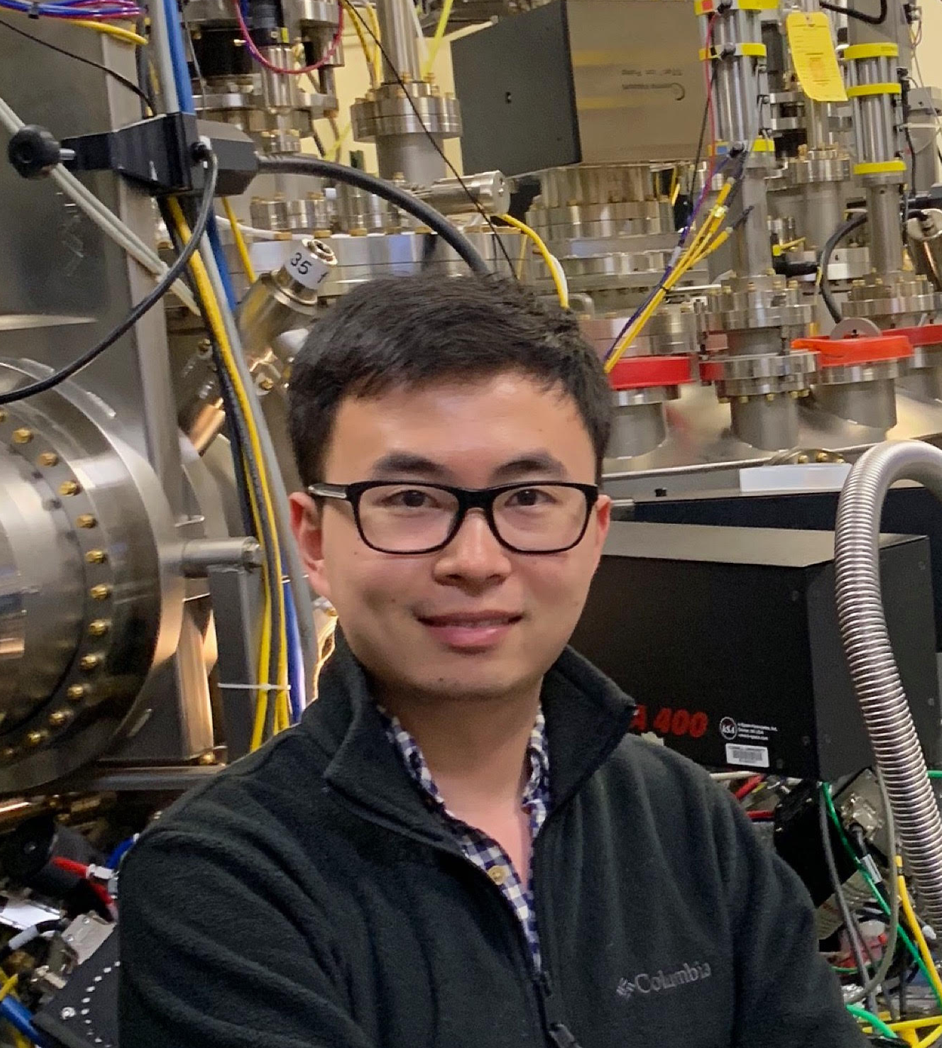Mentor: Saien Xie
Mentor's Responsibility for PARADIM: Post-doc Material Science Engineering/MOCVD
REU intern: Sophia Madelone

Saien Xie obtained his B.S. in Physics from Tsinghua University, Beijing. He received his Ph.D. in Applied Physics from Cornell University, where he focused on developing the MOCVD growth of two-dimensional transition metal dichalcogenide (2D-TMDC) films and heterostructures. He is now a postdoctoral researcher at Cornell University, working on creating heterostructures based on 2D-TMD and oxides with novel (opto-)electronic properties. Outside of lab, he enjoys snowboarding, hiking and traveling.
Project Title:
Designing and Manufacturing Mechanical Parts for PARADIM MOCVD
Project Description:
Transition metal dichalcogenides (TMDs) are ideal candidates for electronic and optoelectronic devices such as photodetectors and light-emitting diodes. TMDs, which form three-atom-thick monolayers, are direct band gap materials that exhibit interesting and unique electronic properties including large excitonic effect, indirect-to-direct bandgap transition, piezoelectricity, and valleytronics. Metal-Organic Chemical Vapor Deposition (MOCVD) is at the forefront in producing high-quality TMDs for studying their new physics and applications of low dimensional material interfaces. As an REU summer intern, you will design mechanical parts for the PARADIM MOCVD setups. Specifically, you will use CAD software to design various mechanical parts such as adjustable supports and have them made in an external machine shop. A number of ways of communication, such as Zoom, GoPros, and emails, will be used throughout the summer.
Project question that defines the REU student's project:
What are the best ways to build a more error-proof MOCVD system? How can adjustable mechanical supports provide the needed stress relief on the quartz tube?
Project plan/research task to answer the research question:
As an REU student, you will work with me and PARADIM users to make the MOCVD system more error-proof and reliable by designing and building mechanical parts. This work will entail learning how to use CAD software known as Autodesk Inventor, which is an application for 3D mechanical design and simulation. It is important to read literature on how MOCVD works and what the mechanical parts are of this system. It is vital for students to understand what is happening in the system so they can explain it to themselves and others. These 2D-TMDC materials that are grown in the facility need a more stable environment, so that is why there is a need for some kind of support on each end of the quartz tube. To seal the system during growth, there are metal flanges on either end that are putting added weight on the tube, so this is where the REU student will work to make some kind of support. These mechanical supports can be adjustable to different heights and can have removable headpieces depending on what style of hold a PARADIM user wants. Once the student has taken the time on their own to learn the software, then sketches will be sent to the mentor for discussion. After a design has been decided upon, then the student will build the final model in Inventor and proceed to send it to the external machine shop once approved by the mentor. Then, the student will get a quote from the shop and figure out a timeline of completion for the metal supports. Two supports are needed and after the machine shop finishes building, it will be sent to the mentor at PARADIM so he can test out how it works. The student may order one for themselves, so they can get the chance to see their creation up close.
List of tasks to be performed by the REU student and tasks to be performed by the mentor to answer the research questions:
All of the tasks described above will be performed by the REU student and the mentor.







